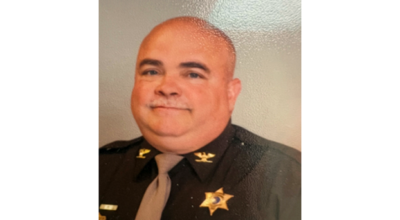Save yourself first in shooting event
Published 2:54 pm Thursday, May 2, 2013
Don’t be scared. Be prepared and aware of your surroundings.
Save yourself first with a “survival mindset,” whether you run, hide or fight.
Avoid “prairie dogging.”
Even if shot, you have an 80 percent chance of surviving.
Statistically, shootings more likely occur at work than at school.
Get out of the “pie,” the slice shape with a triggerman at its tip where it is easiest to sweep back and forth with gunfire.
These are tips made by “Active Shooter,” a program presented Tuesday evening at Dowagiac Middle School for more than 75 government officials by Capt. Lyndon Parrish and Sgt. Phil Esarey.
Four commandos sweep incredible quickly through the cafeteria, helping make the point to run past them with your hands up as they focus like lasers on taking down a gunman.
“Plan for the event and pray it never happens,” Parrish said.
Shootings can occur “anyplace you go — church, theaters, schools, restaurants and workplaces. Schools get the headlines, obviously, but workplaces are where we are most likely to have such events. A lot of the time, we don’t know what motivates them, but a lot of times we do; 21 percent of the time it’s workplace retaliation. There are indicators to watch for. Too many times we look at someone and say that’s so-and-so blowing off steam. Your best bet is to tell somebody and get them some help. It could be someone shaking kids or throwing something. In and of themselves, they’re not unusual, but you can’t tolerate threats. Workplaces need to think about putting policies in place. You walk down the hall here and see all the information about bullying, which happens in workplaces, too. Any act which abuses, threatens, intimidates or assaults cannot be taken lightly. Look for frequency: increased use of alcohol, unexplained increase in absenteeism, noticeable decrease in attention to appearance and hygiene, mood swings, over-reaction to changes in policies and procedures, explosive outbursts of anger or rage without provocation, paranoia, suicidal talk of putting things in order, talk of domestic problems at home, which can easily spill over into the workplace. As a supervisor, don’t blow it off. Almost every event I can think of, there were signs. If you have a gut feeling something’s not right, act on it. Pride, complacency and hesitation will be more hurtful.”
It takes eight minutes to call 911 because people stop first to phone their spouse or boss, Parrish said.
“Realize you don’t know what they’re capable of,” Parrish said. “In an active shooter situation, law enforcement stops them or they take their own life, and it’s usually over in 10 or 15 minutes. You are the only person who can save you before police get there. Don’t rely on cavalry.”
Run/hide/fight comes from a video produced by the Houston mayor’s office.
A plan doesn’t have to be complicated. Flee if possible. Always have an exit plan. Know victims are generally chosen randomly.
Encourage others to evacuate with you, but don’t let them slow you down. Remember you’re what’s important. Leave belongings behind. Getting out of harm’s way should stay the top priority. Warn others from approaching the danger zone. Then call 911.
Hide if there is no route to safety. Silence cell phones. Douse lights. Lock doors. Conceal yourself behind large objects which offer protection and try to remain calm.
As a last resort with your life on the line, improvise weapons — a laptop or a fire extinguisher — and act aggressively to incapacitate the shooter no matter what.
“We see ‘prairie dogging’ a lot,” Parrish said. “Popping your head up when you hear a noise. That’s the time to act — run or hide. When you hear a gunshot, that’s your alarm. In stores, customers follow the lead of employees and managers as to what to do. In your home or office, you should have an idea of how to escape if you can’t get out through the door. One thing I don’t like about the video is they run around the corner and stop. Put brick and mortar between you and danger. When stuff like this happens, adrenaline flow. Some people shut down.”
Esarey said their training has taken place in all four county school districts to familiarize officers with facilities layout.
“We’ve been training since 2001,” Esarey said. “I’ve been instructing since 2002. In 2005, we got two Dowagiac officers and the three of us train everybody in the county in active shooter scenarios, which are very different from regular police work. When you call a bomb squad, you back off and evacuate the area. We cannot do that in this situation.
“When there are victims lying on the floor, we want to help, but we have to move past. In a school, kids could be crying, but if you don’t step over that person to get to the shooter, the more chance he has to make more victims. We normally try to be as safe as we can, but, in this situation, we put ourselves in harm’s way. If a shooter is barricaded, we call in a SWAT team and have extra manpower, vests and armored vehicles to resolve that situation as safely as we can. But a SWAT team takes 30 minutes to an hour to get to a scene, and it will be over in seven to 15 minutes. It has to be resolved by road patrol officers. We develop scenarios with simulation guns because your body won’t go where your mind hasn’t taken it.”
Dowagiac Daily News






